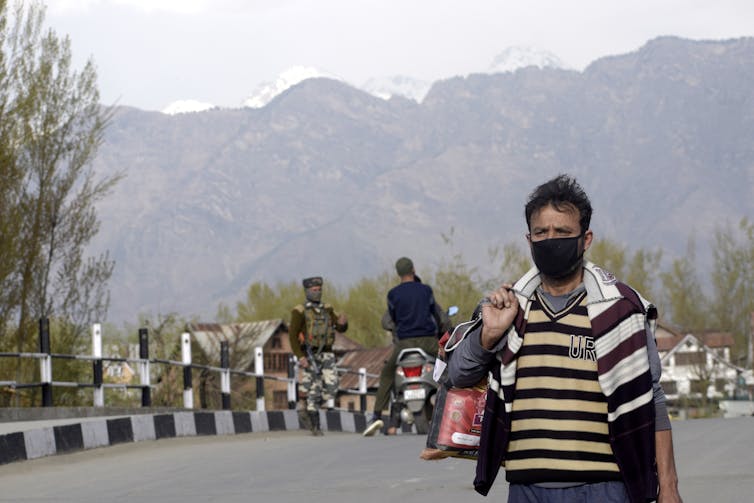COVID-19 is taking a terrible toll worldwide. But in the Himalayan territory of Kashmir, it’s only the latest indignity in a 73-year cycle of oppression, militarization and scarcity.
At least, that’s what the minimal news from Kashmir indicates. The Indian part of Kashmir – which shares volatile borders with Pakistan and China – has been an information black hole since August 2019, when the government of Prime Minister Narendra Modi stripped the region of its autonomous status and split it in two territories to be directly governed by India.
To enforce this radical change, a military lockdown was imposed, which saw Indian soldiers using brutal and indiscriminate violence. As a result, Kashmiris had already been confined to their homes, fearful and isolated, for months before the coronavirus pandemic began ravaging India.

Occupied territories
In my academic research, I study how militarization impacts the social, political and cultural fabric of human life. I grew up in Kashmir valley, one of more than 40 territorial conflict zones in the world.
From Western Sahara to Palestine, residents in these places endure a traumatizing array of human rights violations. These include arbitrary arrests, harassment by security forces, extrajudicial killings and disappearances. So-called “collective punishments,” such as the destruction of homes and farmland, and restricted access to water and other resources, are also common.
Kashmir – home to about 8 million Muslims, Hindus, Sikhs, Buddhists and Christians – became a contested territory in 1947, when India and Pakistan became two separate nations after almost 200 years of British rule. Its king agreed to join India on certain conditions, including maintaining its autonomy.
Kashmir’s accession to India triggered three major wars with Pakistan, turning generations of Kashmiris into casualties of war.
Today Pakistan owns about one-third of Kashmir, and the part of Kashmir under Indian rule is the most militarized place on Earth. With 500,000 troops deployed there, there is one soldier for every 30 civilians, according to the 2020 Armed Conflict Survey. That’s a higher soldier-civilian ratio than wartime Afghanistan.
Most Kashmiris view India as an occupying power and, according to a 2010 poll by the think tank Chatham House, a majority favor independence. The ongoing Indian occupation and thus the desire for freedom has contributed to the rise of some militant insurgencies in Kashmir.https://theconversation.com/in-kashmir-military-lockdown-and-pandemic-combined-are-one-giant-deadly-threat-142252
